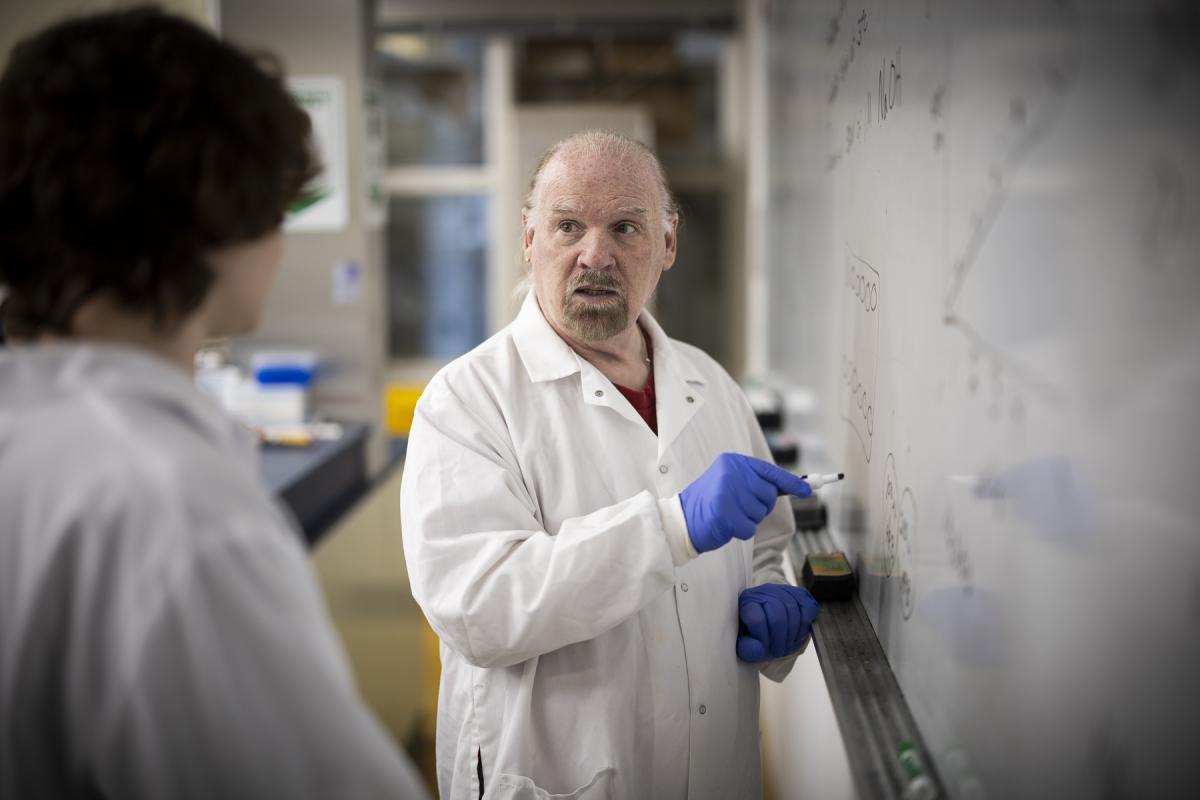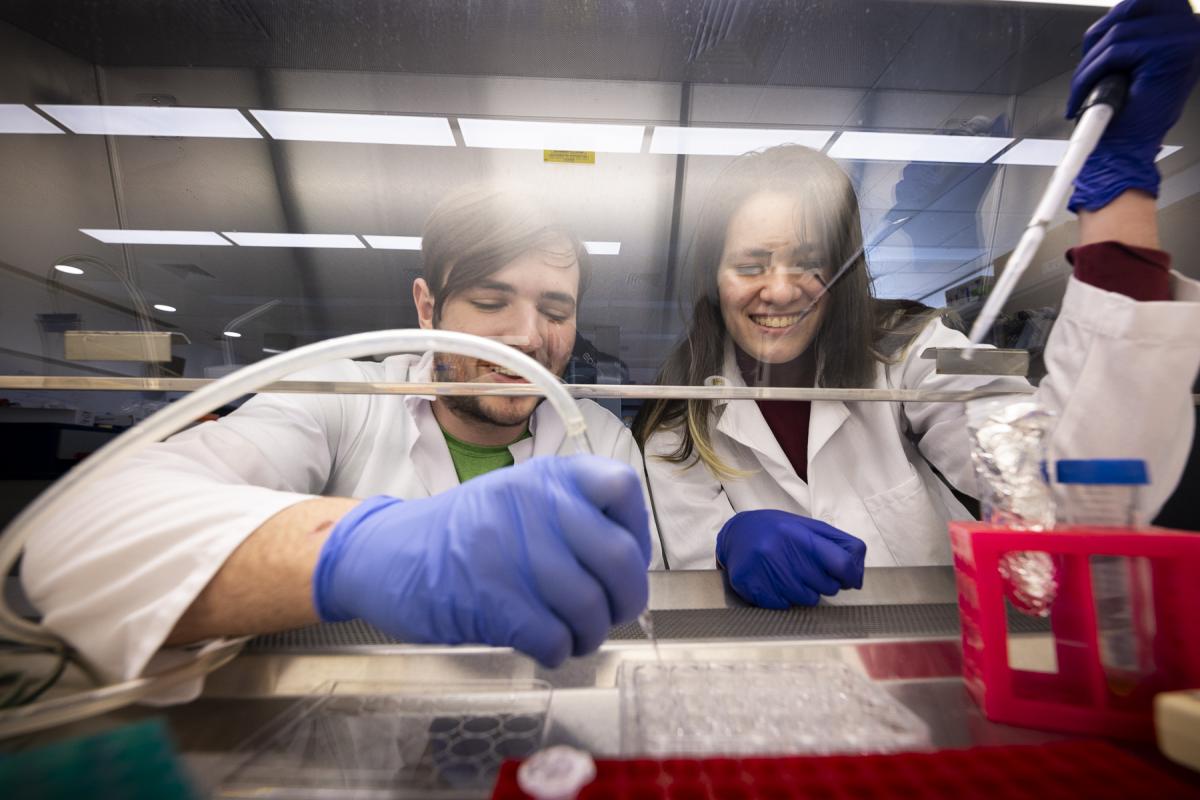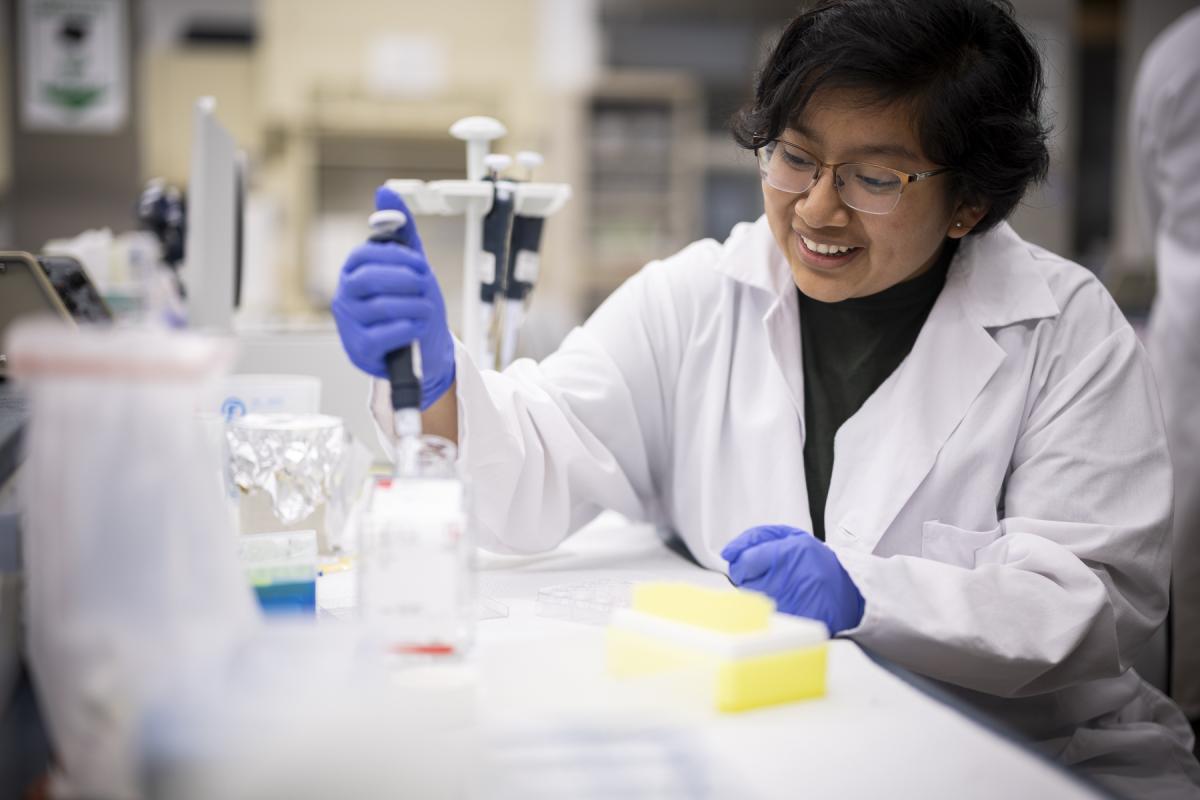STORY: Learning to Grow Mini Organs in the Lab
May 1, 2024
Olin’s “Intro to Tissue Building” gives students a leg up on biology foundations and laboratory techniques.
Students in Olin’s Bioengineering concentration (BioE) are being given the chance to learn how to grow miniature organs in the lab in a Special Topics in Biological Foundations class called “Introduction to Tissue Building.”
In the course, students tackle hands-on lab projects to learn not only the foundations of biology, but also practical knowledge in the field of tissue generation.

As in all courses at Olin, we spend almost all of our time doing instead of talking about it
Micheal Fannon
Biology Lab Manager at Olin + Instructor of the course
“As in all courses at Olin, we spend almost all of our time doing instead of talking about it,” says Michael Fannon, biology lab manager at Olin and instructor of the course. “The students are creating organoids, or smaller versions of three-dimensional organs produced in vitro. Cells are encased in a scaffold shaped like the organ, and they need to be maintained and monitored to make sure they’re doing what they’re supposed to do.”
“Intro to Tissue Building” is one of the options students can take to fulfill the advanced biology requirement of their degree, alongside other courses in topics such as immunology, microbial diversity, and comparative physiology. The intent is for students to explore different biological disciplines throughout the program, honing their skills and gaining a more holistic understanding of the industry.
“Creating real organs is much more sophisticated, but we’re trying to teach them the basics of the tissue engineering field so that they can eventually walk into a lab and know their way around,” says Fannon, who studied with pioneers of tissue engineering such as Judah Folkman and Matt Nugent.

Two Olin students working with organoids under the fume hood. Image by Tom Kates.
Alex Zeigler ’27 is a first-year BioE student in this semester’s course. In her career, Zeigler hopes to make technology to help patients with pulmonary vein stenosis, a rare disease in which a narrowing of the pulmonary vein can lead to complications with oxygenation of the blood.
“Taking ‘Intro to Tissue Building’ was a great way to fulfill my foundational biology requirement, but also learn about the really cool process of tissue engineering,” says Zeigler. “The technology I eventually create could be machinery outside the body, or it could be scaffolding new tissue to replace a patient’s pulmonary vein, and now I have a broad knowledge of how that can be done.”
In addition to creating organoids, another lab project saw students learning how to use beads of hydrogel made from alginate to slow-release a chemotherapy drug called paclitaxel to kill cancer cells in culture dishes.
For a more holistic perspective on the field, students in the class also got to hear from guest speakers who talked about their real-world work in tissue engineering and tissue regeneration. For future iterations of the course, Fannon looks forward to forging more partnerships with industry professionals who can also bring their expertise to the classroom.
“We try to find those who can speak to what they’re doing and the possibilities that exist, because some of what’s out there right now is fascinating and at an almost science fiction-level,” says Fannon. “Some students have also approached me about continuing to study tissue building after Olin, so we try to connect them to this network. Boston is the biotech capital of the world, so there are lots of opportunities to learn and grow.”

Olin students in Introduction to Tissue Building pipetting. Image by Tom Kates.